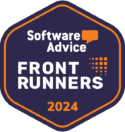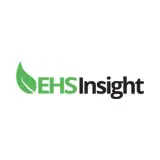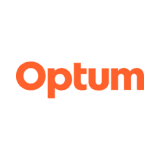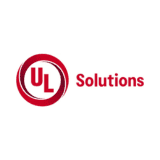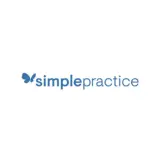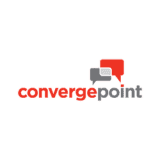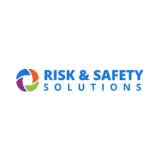- Free Version: Available for teams of up to 10
- Pricing: Premium plan $24/month (with a free 30-day trial period)
- Platforms supported: Available on mobile app (iOS and Android) or a web-based software
Why use SafetyCulture?
This well-renowned digital inspection platform is the perfect tool to maintain or raise occupational health and safety standards and to ensure compliance with relevant regulatory mandates. With SafetyCulture’s intuitive features, managers get a complete view of their operations anywhere and at any time, helping companies keep track of employee conformance to policies, identify problems and appropriate solutions, and work towards HSE (Health, Safety, and Environment) management improvements.
Features:
- Conduct routine Inspections using checklists created from scratch or occupational health and safety templates available for download at the Public Library.
- Announce new or updated protocols through Heads Up so employees can notify management or relevant personnel and find appropriate actions when hazards or risks are detected.
- Generate inspection, corrective or preventive actions, and audit reports to be stored in a secure central repository and accessed when regulatory offices request it for compliance.
- Make better decisions for improvements or changes in processes with the help of robust analytics.
- Provide continuous education and training about safety practices like proper PPE use, proper machinery operation, and systematic housekeeping, to name a few.
Why use EHS Insight?
This is a highly rated EHS platform not just because of its comprehensive suite of features but also because of its fully-configurable solutions. Aside from helping companies see what they need during the trial period so they can implement the system without hassle, they are available for support throughout the project.
Features:
- Incident management
- Audits for compliance
- Interactive training
- Free Version: None
- Pricing: Starts at $3,600 per year (with a free trial)
- Platforms supported: Web, iOS, Android
Why use Optum?
A leader in health-related digital solutions and care delivery, Optum modernizes the occupational health and safety processes and medically-related administrative tasks in companies through their comprehensive set of tools and services, from pharmacy care services to mental health support for employees.
Features:
- Health record management
- Drug testing
- Incident reporting
- Free Version: None
- Pricing: Not indicated
- Platforms supported: Web, iOS, Android
Why use OHM?
Created by UL Solutions, OHM helps companies in the healthcare industry transition from manual to electronic workflows to increase their efficiency in organizing patient information, reduce stress when working on administrative tasks, and focus on their main job—caring for their clients.
Features:
- Auditing and inspection
- Testing and certification
- Certification
- Free Version: None
- Pricing: Not indicated
- Platforms supported: Web, PC, iOS, Android (UL has specific mobile apps for inspection, audits, and reporting)
Why use SimplePractice?
Although this is mainly an EHR (Electronic Health Records) solution, SimplePractice has integrated several other applications that allow business owners in the healthcare system and related industries efficiently manage their day-to-day tasks so healthcare providers can give the care their patients deserve.
Features:
- Appointment scheduling
- Reporting and documentation
- Video appointments via Telehealth
- Free Version: None
- Pricing: Starter plan costs $29 per month (with a 30-day free trial)
- Platforms supported: Web, PC, iOS, Android
Why use ConvergePoint?
This EHS platform powered by Microsoft SharePoint helps companies improve employee performance by ensuring that risks at the workplace are immediately identified and mitigated through paperless reporting and documentation. With the help of its numerous features, businesses can also ensure complete compliance with regulations mandated by the government and industry leaders.
Features:
- Audit reporting
- Certifications management
- Automated training renewals
- Free Version: None
- Pricing: $15,000 per year
- Platforms supported: Web
Why use Risk and Safety Solutions?
Regarded as one of the best occupational health and safety digital solutions providers, Risk and Safety Solutions safeguards employees working in high-risk conditions, such as healthcare services, medical laboraties, and chemical testing facilities through efficient monitoring, effective risk mitigation, and complete reporting.
Features:
- Injury and illness reporting
- Rounding and inspections
- Dashboards and reporting
- Free Version: None
- Pricing: $2,500 per year
- Platforms supported: Web, iOS, Android
What is Occupational Health Software?
Occupational health software is a tool that optimizes health and safety management in the workplace by streamlining workflows and seamlessly integrating staff medical data, operational safety information, and incident reports in a central dashboard. With features like health monitoring, incident tracking, risk management, KPI analytics, and compliance assurance, this digital system reduces administrative tasks, reduces work-related accidents, and improves overall productivity.
Businesses, big or small and across sectors, would benefit from this solution, but this is a must-have in healthcare, manufacturing, construction, and other high-risk industries.
Importance
Cultivating a safe and healthy workplace should be a top priority for companies, as it benefits both the employees and the business as a whole. This is often a challenge for managers because tracking every worker in every step of the operation is tedious and time-consuming. Occupational health software systems faciiltate a more efficient way of ensuring this.
- Enhances data management – Digital health records, machine maintenance history, and incident reports are accurately collated using downloadable checklists, securely stored in a central repository, and quickly accessed by relevant personnel when required. When information is prepared in this manner, companies can ascertain comprehensive workplace safety.
- Engages employees to fully collaborate – One of the software’s most helpful features is communication via mobile phones. It facilitates tasks like hazard identification, incident reporting, and risk mitigation, ascertaining good results. Employees can ask for advice from their managers when issues emerge, and managers can immediately provide recommendations at the next minute, ensuring that issues are resolved before they become challenging problems.
- Improves health and safety at the workplace – With the help of analytics, managers can assess the current performance of their employees (e.g., wearing complete PPE, maintaining correct posture, properly using machinery, etc.) and compare it with the recommended safety standards. Based on the KPIs, business leaders can endorse additional education and training if required.
- Ensures compliance with regulations – If your company wants to abide by the mandates set by OSHA (Occupational Health and Safety Administration), NIOSH (National Institute of Occupational Safety and Health), and CDC (Center for Disease Control and Prevention), among others, using digital solutions to power the company’s operations will be incredibly advantageous. Many platforms offer digital checklists directly linked to these organizations, resulting in more effective routine inspections and audits.
- Increases efficiency and productivity – The software automates many workflows, reducing the resources spent on operational and routine administrative tasks. More importantly, when employees are kept healthy and feel safe in their workplace, they function better, helping the company cut back potential hospital costs and achieve its goals.
Key Features
Occupational health management software may be a stand-alone application or part of the more comprehensive EHS (Environmental, Health, and Safety) platform. Whichever your company chooses, it must have the following:
- Customizable templates (e.g., health records, inspection, audit reports)
- Secure data repository
- Appointment scheduling
- Risk assessment
- Incident reporting
- Corrective and preventive action
- Analytics
- Compliance management
- Integration with third-party systems like EHR (Electronic Health Record)
- Training and education
- Mobile accessibility
Selecting the Right Occupational Health Software
Any of the digital solutions detailed above can assist in your company’s goals to improve occupational health and safety. Get another glance at your best options below:
| Occupational Health Software | Free Version | Paid Plan | Mobile App |
| SafetyCulture | Yes | $24/user/month* | Yes |
| EHS Insight | No | $3,600/year | Yes |
| Optum | No | Not indicated | Yes |
| OHM | No | Not indicated | Yes |
| SimplePractice | No | $29/month | Yes |
| ConvergePoint | No | $15,000/year | No |
| Risk and Safety Solutions | No | $2,500/year | Yes |
* billed annually


